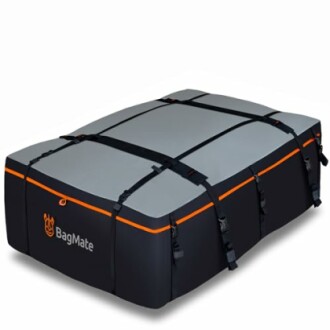
The Importance of Load Capacity in Roof Racks
Key Takeaways
- Understanding load capacity ensures safe transport of cargo.
- Choosing the right roof rack enhances vehicle performance.
- Overloading can lead to significant safety risks.
- Always check the manufacturer's specifications and vehicle guidelines.
When it comes to outdoor adventures or road trips, one of the essential aspects that vehicle owners often overlook is the load capacity of roof racks. Knowing how much weight your roof rack can handle is crucial for not just performance, but also for safety. This guide will delve into the importance of load capacity in roof racks, why it matters, and how to ensure you're making the right choice for your vehicle.
Understanding Load Capacity
Load capacity refers to the maximum weight that a roof rack can safely carry while a vehicle is in motion. It's dictated by both the roof rack design and the vehicle's specifications. If you exceed this limit, you could face risks, including vehicle instability, decreased control, and potential damage to the vehicle itself.
Factors Affecting Load Capacity
- Type of Roof Rack: Different racks, such as crossbars and cargo boxes, will have varying weight limits.
- Vehicle Specifications: Always consider your vehicle’s maximum load rating, which is typically found in the owner's manual.
- Distribution of Weight: Make sure to evenly distribute the weight across the roof rack to maintain stability.
Why Load Capacity is Crucial
Understanding load capacity is crucial for several reasons:
- Safety: Overloading your roof rack can lead to accidents.
- Vehicle Performance: An overloaded roof rack affects fuel efficiency and handling.
- Legal Regulations: Some areas have laws regulating vehicle loads, including roof racks.
Choosing the Right Roof Rack
When selecting a roof rack, consider the following:
Tips for Choosing a Roof Rack:
- Consult your vehicle’s owner manual for load capacity details.
- Look for racks designed for your specific vehicle model for optimal fit.
- Consider your typical gear and the weight when selecting a rack.
Comparing Load Capacities
| Rack Type | Load Capacity (lbs) | Best For |
|---|---|---|
| Crossbars | 150-200 | Bikes, Kayaks |
| Cargo Boxes | 200-400 | Large gear storage |
| Truck Racks | 500-800 | Lumber, Work Equipment |
Product Highlight: Heavy-Duty Waterproof Roof Bag
Heavy-Duty Waterproof Roof Bag
Spacious and versatile roof bag designed for up to 8 suitcases, perfect for road trips and camping adventures. Waterproof and durable for all conditions.
Learn MoreRisks of Overloading Your Roof Rack
Overloading your roof rack can cause serious issues including:
Pros
- Enhanced functionality allows you to carry more gear.
- Flexible storage options for various activities.
Cons
- Increased risk of accidents due to reduced control.
- Potential damage to your vehicle and roof rack.
Conclusion
In conclusion, understanding the load capacity of your roof rack is vital for safety and performance while traveling. Not only does it ensure the well-being of everyone on the road, but it also extends the life of both your vehicle and your cargo gear. Make informed decisions and choose the right roof rack tailored to your needs.
For more detailed information, explore our Buying Guides, or check out our articles on roof racks and boxes for more insights.

